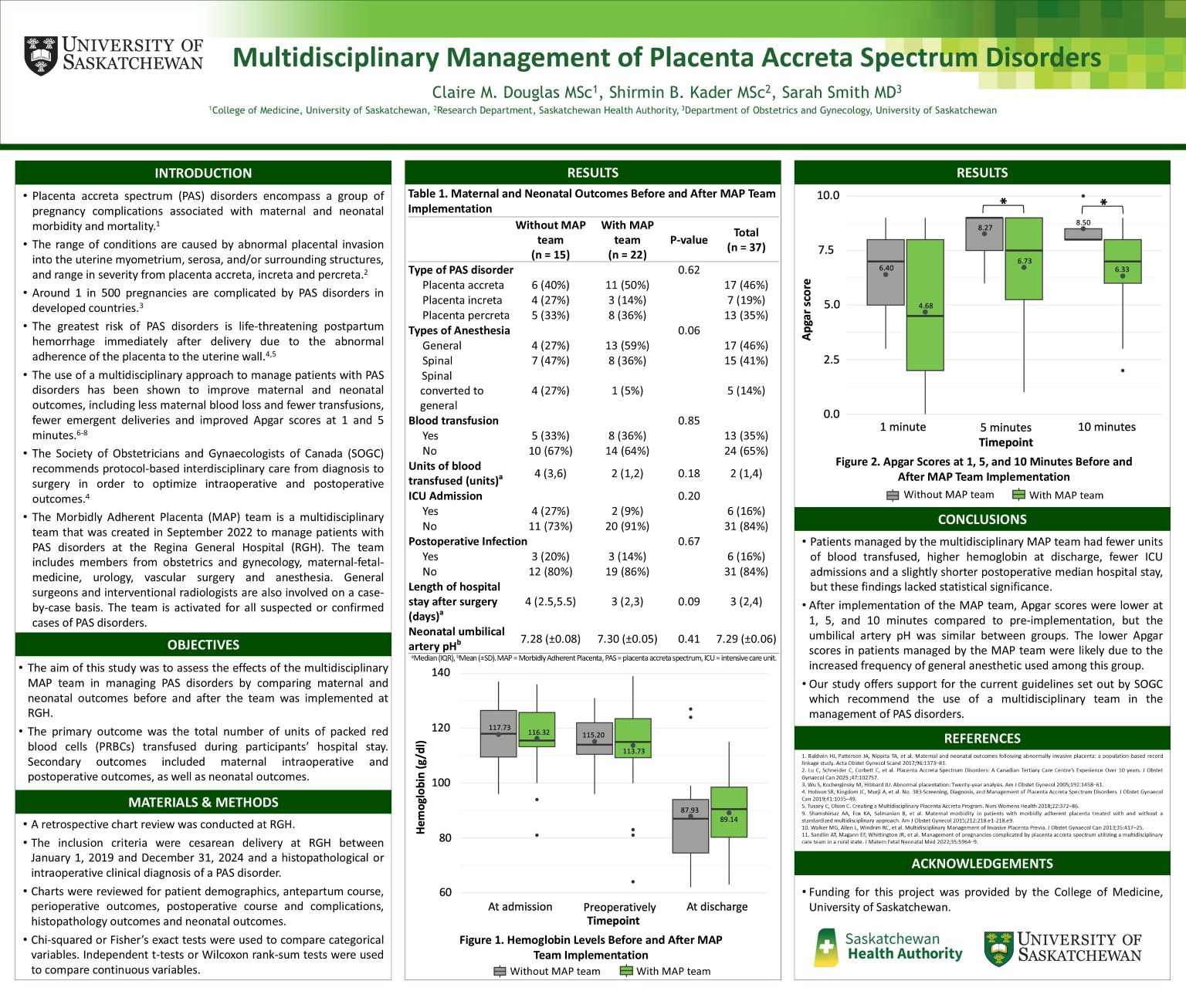
Multidisciplinary Management of Placenta Accreta Spectrum Disorders
Claire Douglas
Objective: To compare maternal and neonatal outcomes before and after the implementation of a multidisciplinary management team for placenta accreta spectrum (PAS) disorders.
Methods: This retrospective cohort study reviewed pregnancies complicated by PAS disorders that culminated in delivery at the Regina General Hospital between January 2019 and December 2024. Patients were categorized by delivery date before (n = 15) or after (n = 22) implementation of the team.
Results: The post-implementation group received fewer units of transfused PRBCs (2 vs. 4, p = 0.175), had higher hemoglobin at discharge (89.14 g/dl vs. 87.93 g/dl, p = 0.839), fewer ICU admissions (2 vs. 4, p = 0.198), and a shorter postoperative hospital stay (3 vs. 4 days, p = 0.094), but these differences lacked statistical significance. General anesthesia was used more frequently post-implementation (59% vs. 27%, p = 0.061). After implementation, neonates had lower Apgar scores at 1 minute (4.68 vs. 6.40, p = 0.061), 5 minutes (6.73 vs. 8.27, p = 0.025) and 10 minutes (6.33 vs. 8.50, p = 0.045) but the neonatal cord arterial pH was similar (7.30 vs. 7.28, p = 0.413).
Conclusion: Our findings support the use of a multidisciplinary team for managing PAS disorders.
